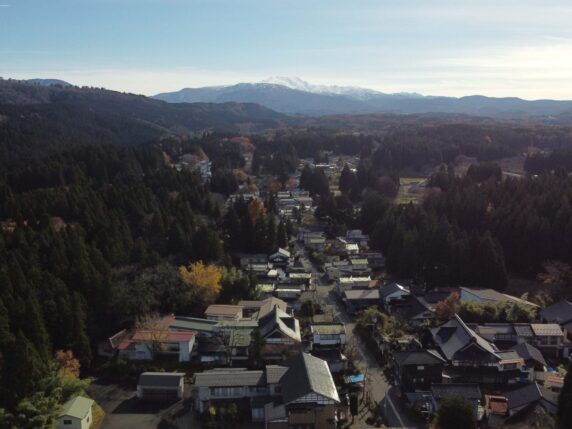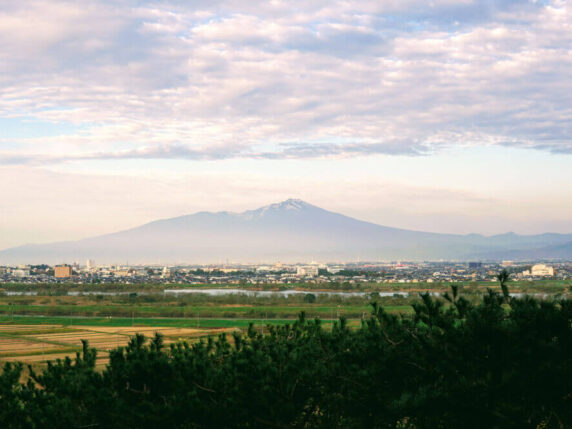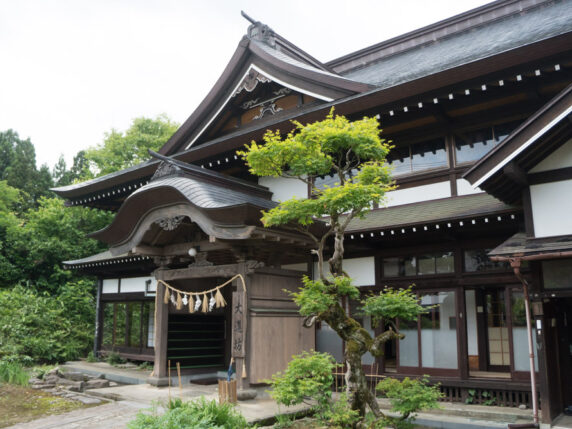All about Mt. Haguro’s Five Story Pagoda
Written by Timothy Bunting
A Marvel for the Modern Era: The Five Story Pagoda of Mt. Haguro
Put simply, the Five Story Pagoda of Mt. Haguro is a masterpiece. That this entirely wooden structure has stood for centuries in the middle of a forest deep in snow country, through earthquakes, warfare, and political upheaval, is tantamount to the deep respect it earns from those lucky enough to gaze upon it. So much so, the Five story pagoda is probably the best known feature of Mt. Haguro, let alone the Dewa Sanzan. Not only that, its location amongst the cedar forests of Mt. Haguro guarantee a truly mystical experience for all. If you're looking for the ultimate in spiritual locations in Japan, look no further than Mt. Haguro's Five Story Pagoda.
What are Five Story Pagodas?
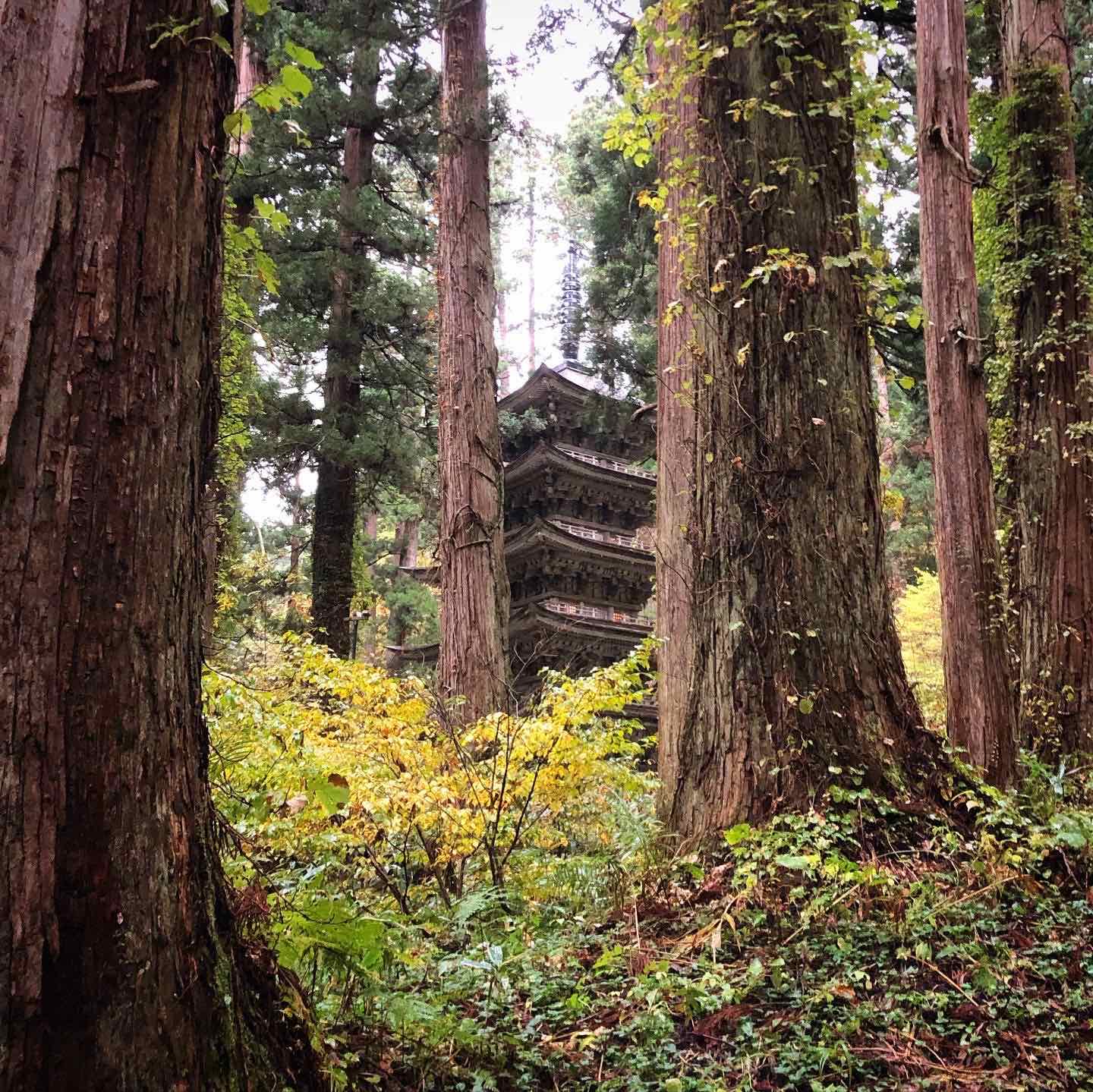
For starters, five story pagoda originate from Indian stupas, dome-shaped structures enshrining the remains of rulers and other leaders. Over time, five story pagodas came to symbolise Buddha following his death in the 5th century BCE. Japanese pagodas were based off Chinese ones, yet more and more they started to be made out of wood. This allowed them to withstand earthquakes, but made them susceptible to fire, which has led to the demise of many five story pagodas throughout Japan.
In addition, each floor of the five story pagodas symbolises a great element in Buddhism; earth, water, fire, wind, and void, respectively. All these combine to represent the entire universe. In Japan, pagodas are not the main part of a temple complex, as is the case in China, but are more for keeping holy artefacts, such as the statue of the Kan'non Buddha Goddess of Mt. Haguro.
History of the Five Story Pagoda on Mt. Haguro
Rumour has it that a famous Samurai named Taira no Masakado built Mt. Haguro's first original Five Story Pagoda between 931 and 938. However, according to the chronicles of Mt. Haguro, the current iteration is a rebuild by the chief priest of Mt. Haguro, Daihoji Masauji in 1372.
This means that the tower survived the widespread destruction of Buddhist artefacts during the Meiji Restoration that happened from 1868 onwards. Until then, Shintoism and Buddhism had co-existed peacefully in Japan since Buddhism arrived there in the 6th century. Shinto Shrines and Buddhist Temples often shared the same complexes, and the Dewa Sanzan were no exception.
Then, in 1868, the Meiji government introduced an ordinance of state Shintoism that led to the destruction of many Buddhist artefacts. Sources say up to 80% of Buddhist artefacts in the country were ruined at this time, and Mt. Haguro in particular went from 30 temples on the mountain, to three (Kezoin Temple, now known as Saikan, Kotakuji Temple, and Shozen’in Koganedo). Fortunately Mt. Haguro's Five Story Pagoda was converted to a Shinto shrine before they could get to it.
Traces of Destruction
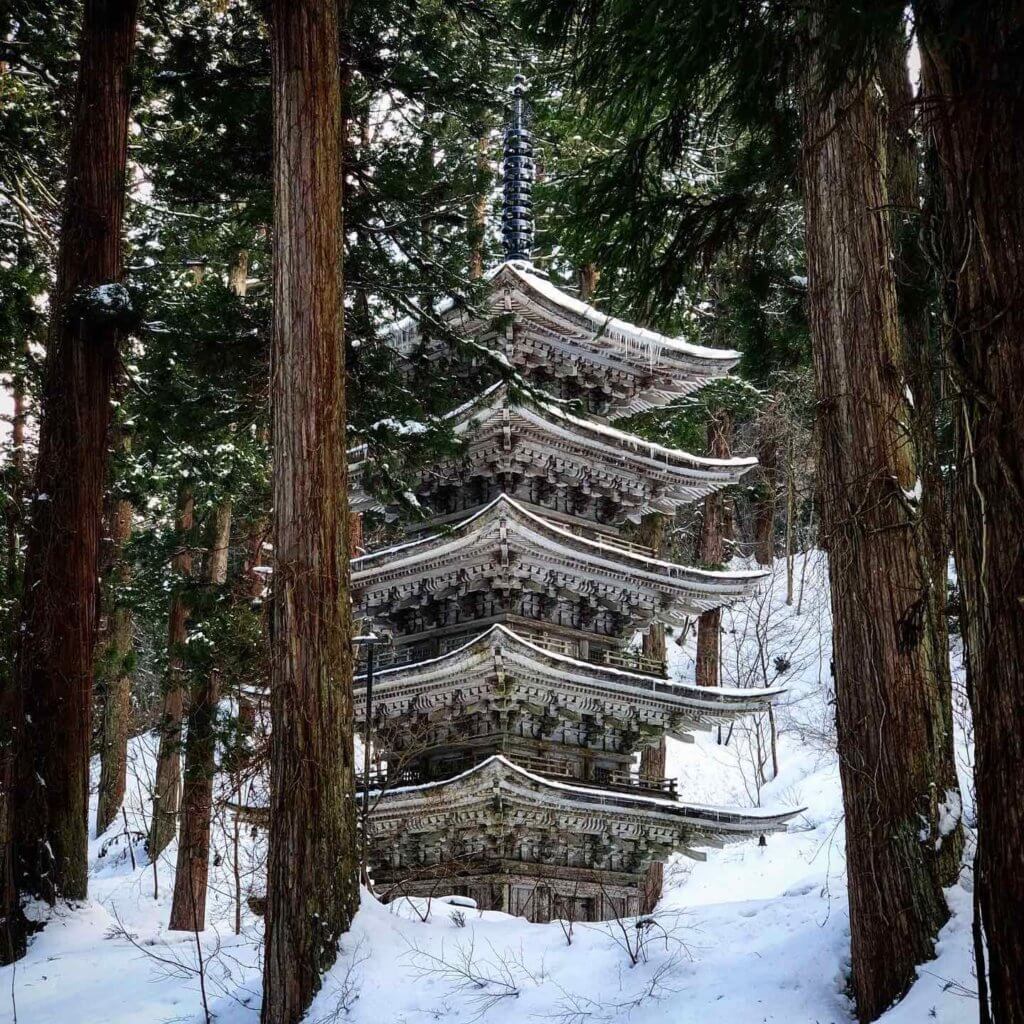
You can still see traces of this everywhere on the Dewa Sanzan. You may notice that the area around the five story pagoda is relatively clear of trees. This is because it was originally surrounded by other temple buildings. Also, take a close look at the Jizo statues next to the tower. Many of these Jizo statues were recovered from the nearby Haraigawa river once freedom of religion was returned to Japan. As gruesome as it is, some of the Jizo have their heads chopped off.
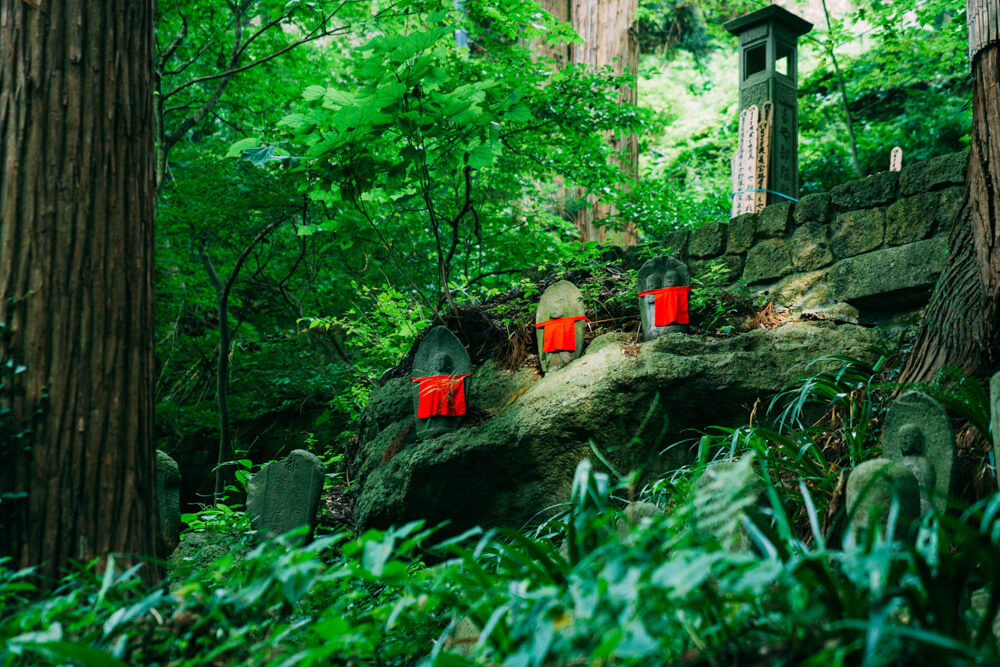
Before long, this resentment towards Buddhism died down, thankfully before it came time to take down the Five story pagoda. The government repealed State Shintoism after World War II and the Japanese once again became able to practice religion freely. Some Buddhist artefacts were hidden during this time, and are now on display at the Senbutsudo Hall at the summit. You can also see the Kannon statue of Buddha originally in the tower at Shozen’in Koganedo Temple.
Characteristics of the Five Story Pagoda
At 29.2m, the Five Story Pagoda of Mt. Haguro is not particularly tall, nor old if you compare it to other five-story pagodas in Japan. However, there are many features that make it stand out. First, the tower is rare in that it stands in the middle of a forest in the middle of snow country. Whereas normally five story pagodas are part of a temple complex, Mt. Haguro’s stands alone in a small clearing at the base of the mountain.
Architecture to last a lifetime
Second, as is common with other pagodas, the roofs get smaller from bottom to top, but Mt. Haguro’s is a bit less noticeable. This is to compensate for the massive amounts of snow that fall on the tower, up to five metres, by making the majority fall on the top. Each year during the winter, people from the village of Toge climb up through the tower to clear the snow, a tradition that has continued since the tower was first built. Such is the dedication of the locals.
Wooden Wonderland

Third, besides for decoration, the structure is entirely wood. There are no nails, nor coats of paint. Instead, the tower is made by intricately piecing together cedar from the nearby mountains in an ancient Japanese style. Moreover, wooden slats are pieced together in an antique style called Kokerabuki to form the roofs. To prevent damage from earthquakes, the tower employs a feature now used in many skyscrapers such as the Tokyo Sky Tree; a single pillar runs right down the middle to counteract any massive vibrations and keep the tower centred. Nowadays, however, the pillar only reaches the top of the second story, as over the years it has suffered damage.
Two for one
Last, the tower is one of two in Tsuruoka City, the only city in north Japan with two five story pagodas. In 2005, Haguro Town merged with the surrounding Tsuruoka City, and the Five Story Pagoda officially came to be in the same municipality as Zenpoji’s.
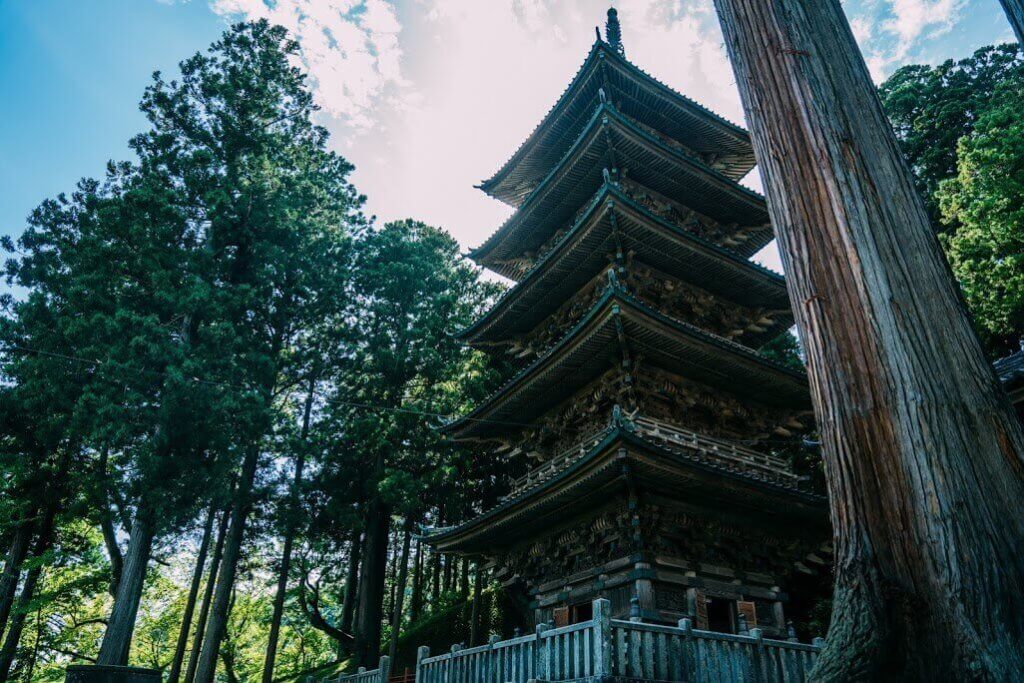
When to visit the Five Story Pagoda on Mt. Haguro
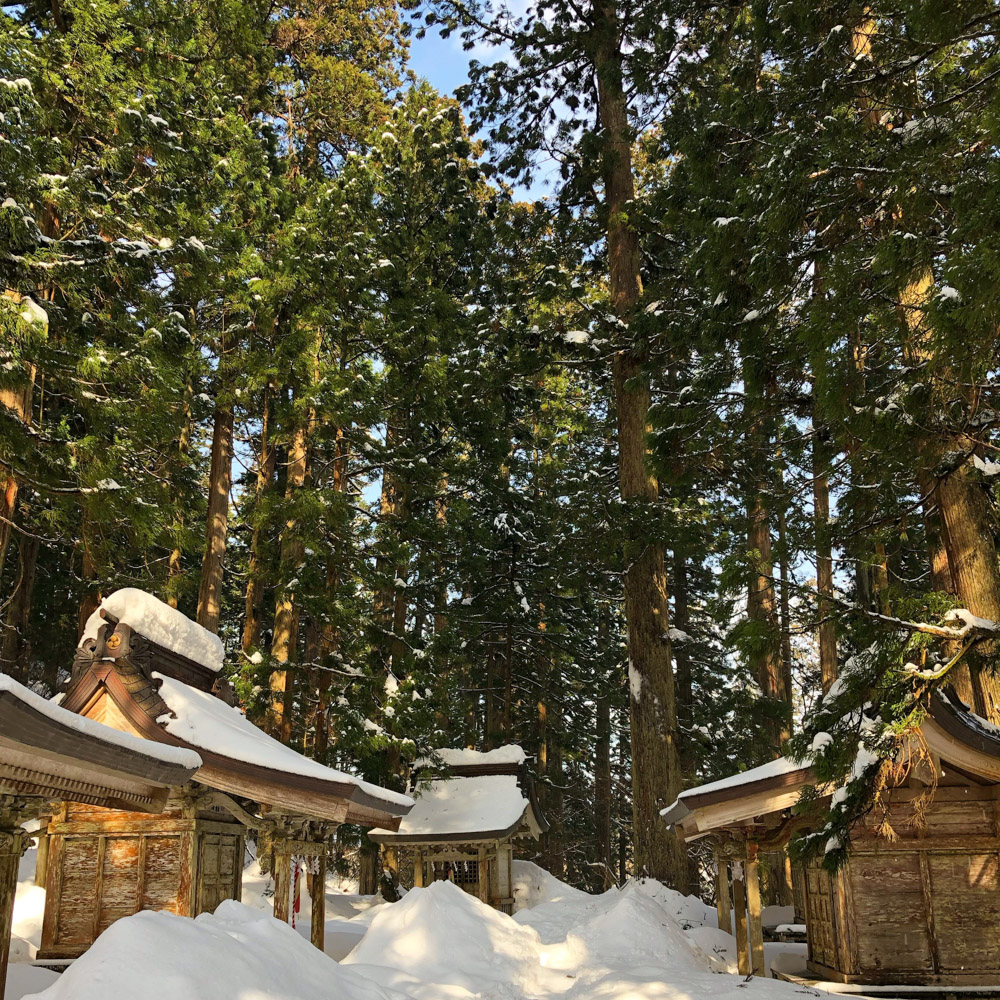
Perhaps the best season to visit the Five Story Pagoda is late in the summer or during the autumn leaves. Not only can you take advantage of Mt. Gassan and Mt. Yudono being open for hiking, but there are also many events on. If you're in town over the summer, we recommend checking out the Five Story Pagoda Light Up or the Dewa Sanzan Flower Festival. Looking for a unique opportunity? On the afternoon of the 25th of August and 1st of September each year, 100s of Yamabushi parade on the stone stairway during the Akinomine Ritual. This coincides with the Hassaku Festival at the top of Mt. Haguro on the 31st of August.
Mt. Haguro is accessible year-round, meaning it's possible to go to the Five Story Pagoda even in the middle of winter. For those seeking a bit of adventure, the nearby Ideha Cultural Museum hires snowshoes for free.
Getting to the Five Story Pagoda on Mt. Haguro
The best way to access the Five Story Pagoda of Mt. Haguro is walking from the Zuishinmon gates at the base of the mountain. This is quite easy for those staying in the Shukubo Pilgrim Lodges, or Saikan at the top, or those visiting Dewa Sanzan Shrine, however it may require a bus or your own transport. More details on Dewa Sanzan transport can be found here.
From the Zuishinmon gates, it is a 500m walk on the stone stairway through the Michelin-starred cedar forest. Once you pass through Zuishinmon, go down the first slope to past a group of Massha shrines at the base. Keep following the path and you will come to a red bridge. This is the Shinkyo bridge, and it crosses over the Haraigawa (lit. purification) River. The Haraigawa River marks the original starting point for the ascent into the Dewa Sanzan where Yamabushi perform purification rituals. Keep following the path past Suganotaki falls, then the Grandpa Cedar, and you’ll see the pagoda on your left. If needed, there is a special road where access possible with a car. Please enquire for more details.
Timothy Bunting
Tim Bunting is a Dewa Sanzan Shrine Yamabushi with over 10 years' experience living beneath the three mystical peaks. He is a self-professed Dewa Sanzan nerd, and is currently working on the Yamabushido project and Dewa Sanzan Monzenmachi Project with Megurun Inc. His roles including assisting in Yamabushi trainings, translating, interpreting, and curating Dewasanzan.com.
Insider information and updates on
The Dewa Sanzan.
Subscribe to the Dewa Sanzan Tribe now.

